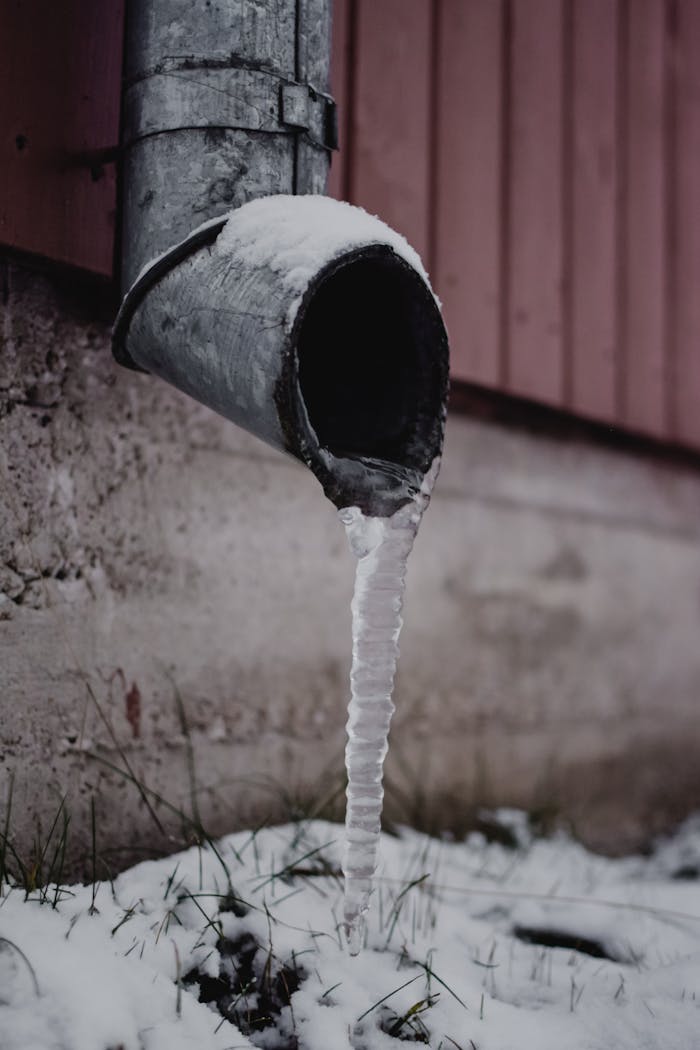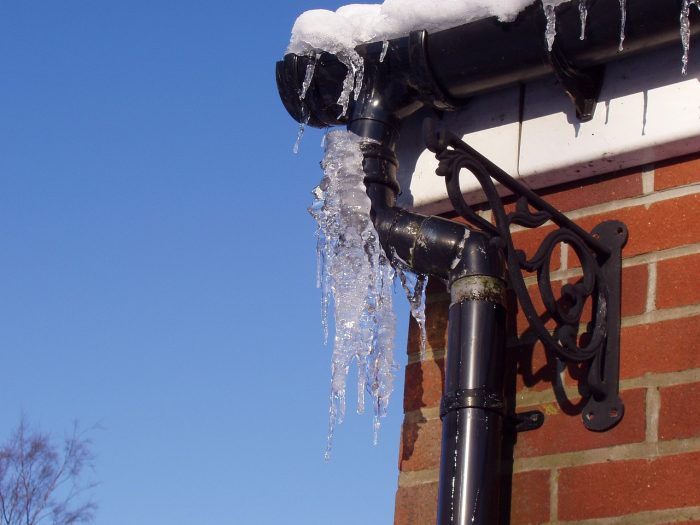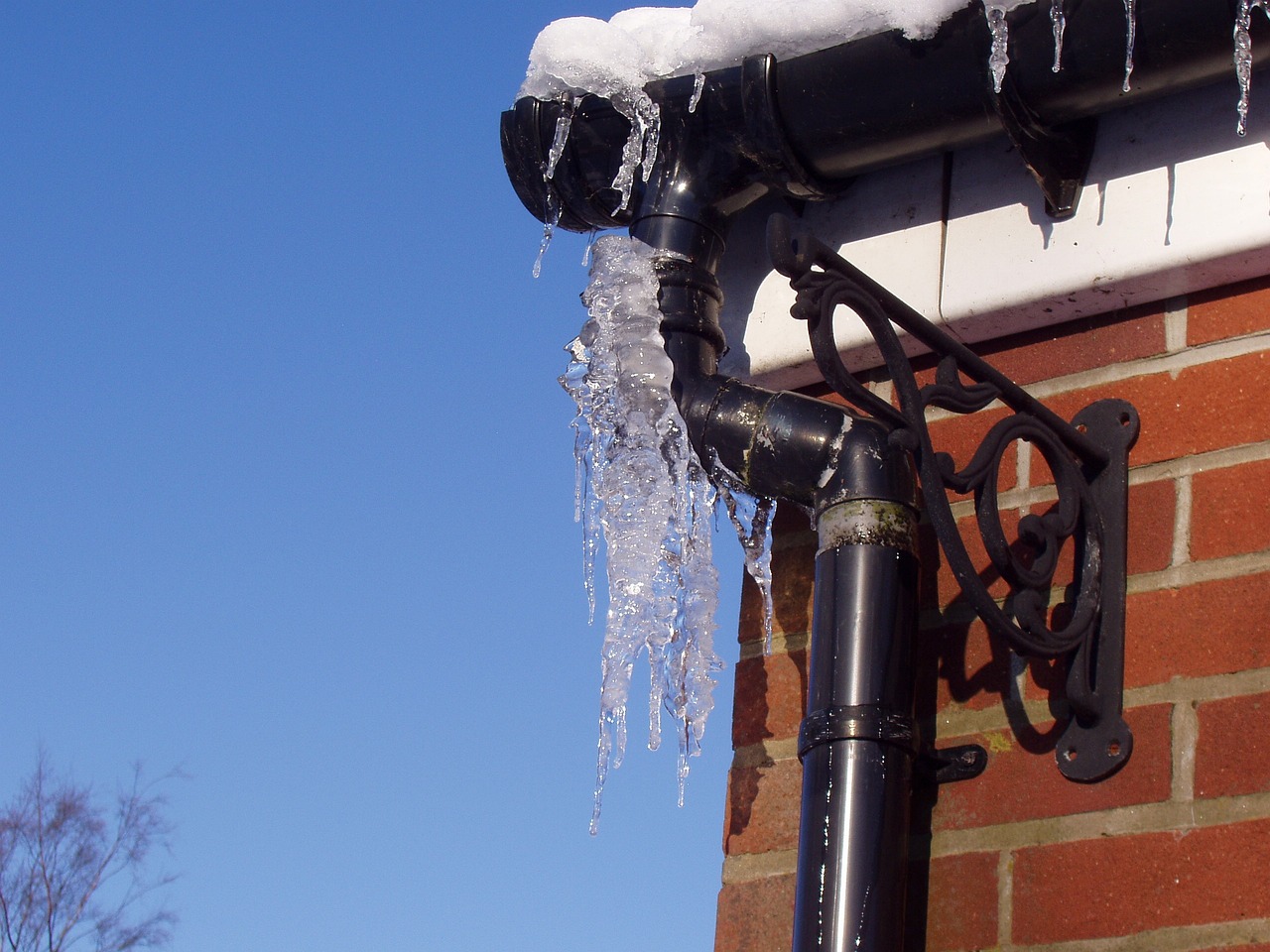
In areas with extremely severe winters, frozen pipes are a typical problem. Due to freezing water expansion, pipes can burst or crack. This can result in water damage and expensive repairs. The key to avoiding these issues is fixing frozen pipes in a timely and accurate manner.
Here’s how to Unthaw Frozen Pipes
You must exercise caution when unfreezing frozen pipes to prevent them from rupturing. In this detailed tutorial, we will:
Materials and Tools:
- Electric heating tape (optional)
- Portable space heater or heat lamp
- Thermostat (optional)
- Towels
- Hairdryer
- If there is a potential for leaks, use a bucket.
Steps:
- Locate the frozen pipes
- Search in places that don’t get much heat, such as outside walls, crawl spaces, basements, and attics.
- Make sure all of the faucets are in working order. Follow the pipes back to find out if they are frozen.
- Open the faucet
- For two-handle faucets, turn the water on to the cold side first.
- Defrost the pipe by turning on the attached faucet. When the ice melts, water will be able to flow through.
- Apply Heat
- Begin at the sink and work your way to the frozen food area. Avoid getting the dryer wet, and keep it moving.
- Locate it close to the frozen part. Fire hazards should be avoided.
- Place it around the pipe. If necessary, re-wet the towels.
- As directed by the manufacturer, wrap the pipe. The heat is maintained consistently.
- Monitor and adjust
- Look in other places for more frozen chunks.
- Keep an eye out for any indications of pipe bursts or leaks.
- Prevent future freezes
- Keep your house at a constant temperature.
- To prevent cold air from escaping, seal any gaps or cracks in the floor or walls.
- Keep a small amount of water running through faucets when the weather is really cold.
- Make sure the air around pipes under sinks can circulate.
- If your pipes are exposed, insulate them with foam.
The pipes with the highest likelihood of freezing
Areas without adequate insulation or subjected to extreme temperatures are the most likely to have pipes that freeze. Some common locations and types of pipes that are susceptible to freezing are:


Exposed Pipes
The danger level increases for any pipes located in unprotected places or those that are open to the weather.
Unheated Areas
Colder climates often house pipes under bathroom and kitchen cabinets, in attics, basements, garages, and crawl spaces.
Pipes in the Attic
These are prone to freezing because they are frequently unprotected from the cold and wind.
Outdoor Pipes
Pool supply lines, sprinkler lines, and garden hose bibs are examples of pipes that run outside the house.
Under Sink Cabinets
If the doors to your bathroom and kitchen cabinets are closed, the pipes under the sinks are particularly vulnerable to freezing, cutting off the flow of warm air.
The Outside Walls
Pipes located on outside walls are at a higher risk of freezing, particularly in poorly insulated walls.
How long can pipes stay frozen without bursting?
Whether or not water flows through the pipes, the surrounding insulation, the outside temperature, and the type of pipe material all play a role in determining how long pipes can stay frozen before breaking. Listed below are a few broad considerations:
- Insulation
- Pipes with adequate insulation have a lower risk of bursting. Insulation helps keep the inside temperature of the pipes constant and reduces the rate at which they freeze.
- Duration
- Pipes may stay frozen for at least one day in milder climates before bursting.
- A generally applicable time frame does not exist. In uninsulated pipes, freezing temperatures can cause them to rupture in a matter of hours.
- Material of Pipes
- The tolerances of PEX and PVC pipes are different; PEX is less prone to burst and more flexible.
- Although copper pipes are less likely to rupture than plastic ones, they can still crack after being frozen for a long time.
- Water Flow
- A slow flow of water helps keep pipes from becoming solid, even in the winter. When water is flowing, it is less likely to freeze and burst pipes.
- Temperature
- Chillier freezing conditions allow pipes to stay frozen for an extended period of time without breaking.
- Pipes are more likely to freeze and rupture in cold weather. The danger is heightened in really cold weather.
How can I thaw frozen pipes without access?
Although it may be difficult, following these methods allows you to thaw frozen pipes without direct access. There are several approaches you can take:
- Warm the pipe from inside
- Drown a salt solution in the toilet. By reducing the freezing point of water, salt can facilitate the thawing of ice.
- Carefully pour boiling water down the drain if you are able to reach the other end of the pipe. If there’s ice inside the pipe, this might help melt it.
- Apply heat to adjacent areas
- To heat the area around the pipe, you can use infrared lamps.
- If you can reach the pipe’s accessible areas, wrap them with electric heat tape.
- Professional Assistance
- It’s best to call a plumber if you believe a pipe is extremely frozen or if you are unable to thaw it yourself. These professionals have specialized equipment, including machines that can thaw pipes.
- Using hot water
- Turn on the water supply to the frozen pipe and let the faucet run slowly. Running water can melt the ice inside the pipe.
- Put filled water bottles against the pipes to keep them hot.
- Wrap the accessible sections of the pipe with hot water-soaked towels. Towels can be heated as needed.
- Increasing the ambient temperature
- Let warmer air circulate around the pipes by opening the doors to the bathroom and kitchen cabinets.
- Position space heaters close to the pipe location. To avoid any potential fire risks, make sure they are secure and closely watched.
- Make your house warmer by turning up the thermostat.
A combination of these techniques and patience can be used to thaw frozen pipes without physical access.
What to do if your pipes freeze overnight?
To avoid burst pipes due to overnight freezing, you must move swiftly. Here are some steps you can take to address the issue:
- Pinpoint the frozen pipe
- To find out which faucets aren’t working, turn on every single one in your house. If the faucet’s water is either nonexistent or barely trickling, then the frozen pipe is likely attached to it.
- Open Faucets
- If the pipe is frozen, open the attached faucet. Once the pipe begins to thaw, water can flow through it, reducing pressure and preventing it from breaking.
- Apply Heat
- Another option is to wrap the frozen pipe in hot towels that have been soaked in hot water.
- If you have electric heat tape on hand, wrap it around the pipe. Pay close attention to the directions provided by the manufacturer.
- The frozen pipe section can be thawed with the help of a portable space heater, heat lamp, or hairdryer. To return to the frozen spot, begin at the faucet and work your way outward.
- Don’t use an open flame
- The use of any open-flame device, such as a charcoal stove, propane or kerosene heater, blowtorch, etc., is strictly prohibited. This will cause a fire or damage the pipe.
- Check for leaks
- As the pipe thaws, pay close attention to any signs of leaks or bursts. If you discover a leak, stop the flow of water to the affected pipe and contact a plumber as soon as possible.
- Prevent future freezing
- In very cold weather, let the water trickle out of faucets to keep it circulating and prevent it from freezing.
- Make sure the temperature on the thermostat remains constant all day long.
- Wrap pipes in insulation, particularly those located in cold places like crawl spaces, basements, attics, and garages.
- Seeking expert advice
- Get a professional plumber to securely defrost the pipes and inspect them for damage if you can’t find the frozen section or if the line is inaccessible.
You can reduce the likelihood of frozen pipe damage and get the issue fixed faster if you follow these measures.
Safety Tips
- In particular, make sure that the crawl space and basement, which contain pipes, are heated and maintained at a minimal temperature.
- Use heat tape or foam pipe insulation to protect exposed pipes from potential freezing.
- Don’t defrost pipes using an open flame, including a propane heater or blowtorch. This poses a risk of fire and pipe damage.
Safety precautions when unthawing frozen pipes
To minimize harm and additional plumbing damage, it is imperative that you pay close attention to safety precautions while unfreezing frozen pipes. To ensure your safety, please follow these guidelines:
- Avoid open flames
You should never use a blowtorch, kerosene heater, propane heater, or any other device that exposes you to open flames. These devices could result in a ruptured pipe or even a fire.
- Use safe heat sources
- Set them up in the room so that the space surrounding the pipes can warm up over time.
- To prevent any one area from being too hot, use it on a low setting and make sure it moves around.
- Rub it into the pipe’s frozen area.
- Heat the pipe slowly
Before reaching the frozen area, begin heating the pipe that is nearest the faucet. This increases the likelihood of melting water draining from the faucet.
- Work Environment
- Clear any combustible materials from the area surrounding the heating process.
- Be sure there is enough air circulation in the room before setting up any heat-generating appliances, such as space heaters.
Protective Gear
- Take precautions to avoid getting your eyes, hands, or eyes burned by hot surfaces or splashes.
Electrical Safety
- When using electrical devices near water, always use GFCI outlets to avoid electrical hazards.
- For safety reasons, never place electrical heating equipment or its cord in water.
- Expert Help
- If the frozen piece cannot be located, the pipe is inaccessible, or the line has already been damaged, a professional plumber should be contacted.
- Post-Thaw Precautions
- While you look for leaks, slowly turn the main water valve back on.
- Make sure to check the pipes for damage or leaks after they have thawed.
- Preventative Measures
- Make sure that no cold air can get in by sealing any cracks or holes in your home’s foundation, windows, and doors.
- Remember to maintain a minimum temperature of 55°F in your home during cold weather, even while you’re not there.
- To avoid freezing in the future, insulate your pipes.
If you want to unthaw frozen pipes without hurting yourself or causing additional damage to your plumbing system, follow the above safety measures.
The importance of gradual thawing
To avoid an abrupt increase in pipe pressure, gradual thawing is crucial. These are the main reasons:
- Ecological Considerations
- Water can be better conserved by lowering the likelihood of leaks and water waste due to pipes that thaw gradually to avoid bursts.
- Minimizing the need for emergency repairs and keep systems functioning is possible by preventing burst pipes through slow thawing.
- Controlled pressure release
- The risk of leaks and breakage is reduced since gradual thawing reduces stress on pipe joints and connections.
- The ice can be melted at a regulated rate by gradually raising the temperature surrounding the frozen pipe. This way, the pressure may be released gradually, avoiding damaging spikes.
- Ensuring Safety
- By thawing out gradually, the water supply is protected from contamination threats due to burst pipes and remains fit for human consumption.
- If water gets into electrical wires, a burst pipe might cause electrical risks, among other dangerous conditions. Gradual thawing helps to reduce these risks by avoiding unexpected pipe collapses.
- Preventing water damage
- You can avoid expensive repairs and restoration costs associated with water damage.
- Water from burst pipes can cause significant damage to homes and structures. If pipes thaw gradually, they are less likely to break and cause floods, which helps to avoid such situations.
- Maintaining operational efficiency
- Minimizing the need for emergency repairs and keep systems functioning is possible by preventing burst pipes through slow thawing.
- Gradual thawing can keep water flowing consistently through pipes. This is great for industries, commercials, and homes since it prevents interruptions that can ruin everyday life.
- Preventing burst pipes
- Gradual thawing helps keep pipes structurally sound by lowering the likelihood of pressure spikes that could break or burst pipes by letting the ice melt gently and evenly.
- Ice buildups occur when water in pipes freezes and expands. Sudden thawing can cause pipes to explode due to the quick pressure rise felt by water trapped between ice blocks.
Conclusion
If you are unable to identify the frozen piece, the pipe is inaccessible, or you have reason to believe that a pipe has burst, it is advisable to contact a professional plumber. In a safe manner, they can unfreeze pipes and fix any damage that has occurred.
If you follow these instructions carefully, you should be able to unfreeze your frozen pipes and reduce the likelihood of water damage to your house.
